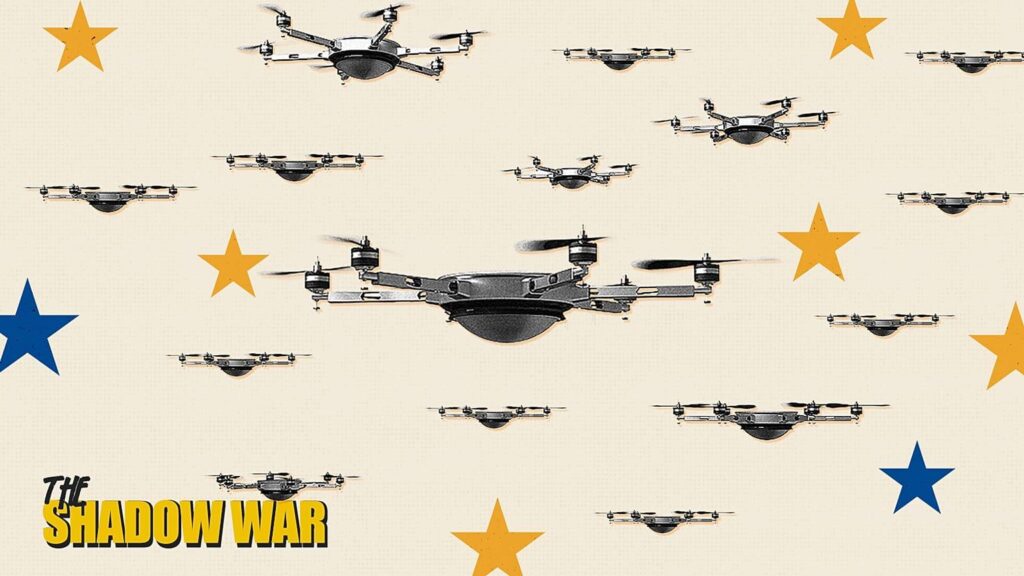In a stark warning to Europe, Ukrainian President Volodymyr Zelensky has accused Russia of deliberately escalating the conflict through a series of recent drone incursions. Speaking amid mounting tensions on the battlefield, Zelensky characterized these increasingly sophisticated attacks as a clear signal of Moscow’s intent to intensify the war. The developments come as European nations grapple with how to respond to the evolving threat, raising urgent questions about regional security and the future trajectory of the conflict.
Drone Incursions Signal Moscow’s Intent to Widen Conflict in Eastern Europe
Recent drone incursions launched by Moscow have heightened tensions across Eastern Europe, signaling a deliberate effort to expand the scope of the ongoing conflict. Ukrainian President Volodymyr Zelensky issued stark warnings to European nations, urging them to recognize these acts not as isolated incidents but as clear indicators of Russia’s broader strategic ambitions. The unauthorized UAV operations have not only breached Ukrainian airspace but also raised alarms for neighboring NATO members, underscoring Moscow’s intent to destabilize the region beyond current battlefronts.
Key implications of these drone activities include:
- Potential escalation from localized skirmishes to a wider regional conflict
- Heightened risk of direct confrontations involving NATO forces
- Increased challenges to European security infrastructure and readiness
- Urgency for coordinated defense and intelligence sharing among affected countries
| Aspect | Current Situation | Potential Outcome |
|---|---|---|
| Drone Operations | Frequent airspace violations | Wider air defense mobilization |
| Diplomatic Response | Calls for restraint and dialogue | Possible sanctions escalation |
| Military Posture | Heightened alert in border regions | Increased troop deployments |
Zelensky Urges European Unity and Enhanced Air Defense Measures
Ukrainian President Volodymyr Zelensky has called on European nations to stand united in the face of escalating threats posed by Russia’s recent drone incursions. Highlighting the persistent attempts by Moscow to intensify the conflict, Zelensky emphasized the urgent need for enhanced air defense systems across the continent to better protect critical infrastructure and civilian populations. His message underscores growing concerns regarding the vulnerability of European airspace and the potential ripple effects on regional security.
In response to the alarming uptick of unmanned aerial attacks, Zelensky outlined key priorities for European defense coordination:
- Strengthening integrated air surveillance networks to improve real-time threat detection.
- Accelerating joint procurement of advanced missile defense technologies among EU member states.
- Increasing intelligence sharing to anticipate and neutralize drone operations before they reach strategic targets.
| Air Defense Measures | Current Status | Needed Improvements |
|---|---|---|
| Radar Coverage | Partial | Full Network Integration |
| Interceptor Missiles | Limited Supply | Increased Production & Distribution |
| Cybersecurity | Developing | High Priority Enhancements |
Experts Recommend Strengthening Intelligence Sharing and Coordinated Response Strategies
Leading analysts emphasize the critical need for enhanced intelligence collaboration among European nations to confront the growing threat posed by drone incursions. By establishing real-time data exchange protocols and joint surveillance operations, experts argue that countries can better anticipate and counteract asymmetric tactics employed in the conflict. This unified front not only improves situational awareness but also ensures swift and informed decision-making.
Recommended coordinated strategies include:
- Integrated air defense networks to detect and neutralize aerial threats
- Standardized communication channels for rapid dissemination of threat intelligence
- Cross-border task forces trained in counter-drone operations and crisis management
- Joint exercises simulating drone-related scenarios to refine response tactics
| Strategy | Purpose | Key Benefit |
|---|---|---|
| Real-Time Intelligence Sharing | Immediate threat awareness | Faster response times |
| Integrated Air Defenses | Aerial threat interception | Reduced drone impact |
| Cross-border Task Forces | Unified operational efforts | Improved coordination |
Recommended Coordinated Strategies:
- Integrated air defense networks to detect and neutralize aerial threats
- Standardized communication channels for rapid sharing of threat intelligence
- Cross-border task forces trained in counter-drone operations and crisis management
- Joint exercises simulating drone scenarios to improve response tactics
Summary Table of Strategies:
| Strategy | Purpose | Key Benefit |
|---|---|---|
| Real-Time Intelligence Sharing | Immediate threat awareness | Faster response times |
| Integrated Air Defenses | Aerial threat interception | Reduced drone impact |
| Cross-border Task Forces | Unified operational efforts | Improved coordination |
This unified and coordinated approach aims to bolster situational awareness and operational efficiency in mitigating asymmetric drone threats across Europe.
Closing Remarks
As drone incursions into Ukrainian airspace continue to rise, President Zelensky’s warnings underscore the potential for a broader escalation in the conflict. European nations now face heightened concerns over regional security and the risks posed by an increasingly aggressive Russia. The developments serve as a stark reminder of the fragile nature of peace in Eastern Europe and the urgent need for coordinated international response.
